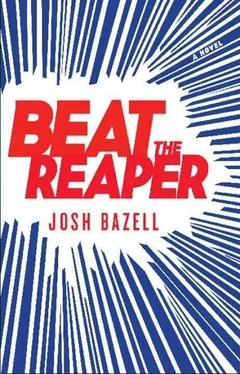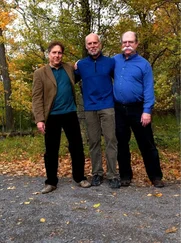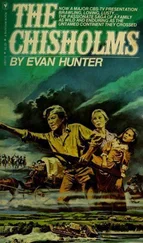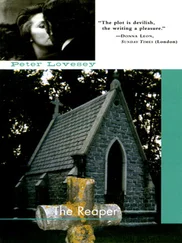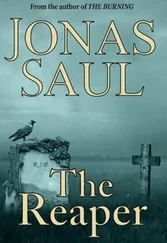Fifty yards in, my eyes adapted to the gloom. The noise and wind were gone. Weird giant trees I couldn’t identify (not that I could identify, say, an oak) had branches going out in all directions. The lowest-lying ones snagged my feet beneath the snow.
It took so much attention just to pick my way forward that I didn’t notice the ravens until one dropped to a branch right above and in front of me. Another two stayed higher up and watched me. I lay back against the snow and stared at them. They were the largest wild birds I’d ever seen. After a while they started cleaning themselves like cats.
I breathed the clean sharp air and wondered whether ravens could live as long as parrots, and if so whether these ones had been here during World War II. Or World War I, for that matter. I wondered if my grandparents had ever tried to eat them.
If they hadn’t tried to eat them, what had they tried to eat? How did you even get around in a place like this? How did you do laundry, let alone fight off Nazis? The place was like some kind of afterlife.
Eventually one of the ravens screamed, and all three flew away. Shortly after, I heard machine noises.
The obvious thing to do was go back to the road, since the snow was starting to work into my boots. But I was curious—not just about the source of the noise, but about how quickly you could get someplace through these woods if you had someplace you needed to go. So I followed the noise, and went farther into the woods.
As the noise got louder, other mechanical sounds joined it. Soon I could see the tops of cranes. Soon after that I stumbled out through another wall of snow and rolled to my feet in a clearing.
It was a clearing in the sense of “just recently cleared.” The ground was scraped perfectly flat for maybe a hundred acres, and men in parkas and primary-colored hardhats were using giant machinery to clear more trees from the edges, whacking them down and cutting them into lengths that could be lifted onto flatbeds. Black exhaust from half a dozen sources smudged into the otherwise white sky.
I tried to talk to one of the workers. I think he said he was from Veerk , the Finnish lumber company, but we didn’t seem to have a common language, so in the end we both just shrugged and laughed, since what the fuck else can you do.
It wasn’t very funny, though. Białowieża is the last remains of a forest that once covered eighty percent of Europe. Seeing another chunk of it mowed down was like watching the navel of the world sanded off. It left one less point of entrance to the past—my grandparents’ or anyone else’s. One less sign that we’d been human to begin with.
And one more piece of history as vapor, in which you could see anything you wanted, or nothing at all.
I backed up to Lublin and headed south for the main event. Took the Iron Curtain Express down to Kraków by sleeper car, something I’d never done before and probably won’t do again, though it wasn’t a bad time. In my upper bunk I ditched the blanket, which appeared to have an inordinate amount of pubic hair woven into it, and lay on the sheets in my overcoat, reading by the bare bulb near my head.
I’d bought a stack of books in Lublin. The Communist-era stuff was funny but shallow. (“Visitors are invited to inspect the Lenin Steel Works, the Czyżyny cigarette factory, and the Bonarka artificial fertilizer plant!”) Most of the modern Polish stuff was stupid and hateful, with hundreds of pages on how Lech Wałesa was a saint, and none on how he should be eating shit like the pig-faced bitch that he is. [24] My favorite Lech Wałesa story is from shortly before I went to Poland. Realizing he was about to lose the presidency, Wałesa announced that his opponent was secretly Jewish. He then denied he was a bigot, saying, “Actually I wish I was Jewish myself. Because then I would have a lot more money.” Funny guy!
And the stuff that seemed accurate was just depressing.
Jews blamed for fire! Jews blamed for plague! Jews blamed for all of Europe being ruled by Jew-hating fucks!
Jews making up a third of Kraków’s population in 1800, a quarter in 1900, and none at all in 1945.
In the morning, on my way from the train station to my hotel, I stopped and bought my bus ticket to Auschwitz.
I’ll spare you most of it.
Auschwitz when it was up and running was really three different camps: the death camp (Birkenau, also known as “Auschwitz II”); the I. G. Farben factory camp (“Auschwitz III,” or Monowitz) where the slaves worked, and the combination holding and extermination camp that lay between them (“Auschwitz I,” or simply Auschwitz). Since the Germans bombed Birkenau as they fled—proving Plato’s claim that human shame arises solely from the threat of discovery—and then the Poles scavenged the ruins for bricks, the main museum is at Auschwitz I.
To get there you take one of those buses that, through some kind of historical leapfrogging, are more modern than any in the United States. The Poles call the neighborhood Oświęcim —you never see a sign that says “Auschwitz.” The area is fully industrialized and occupied, with apartment buildings across the street from the concentration camp entrance, although the tour guide tells you in Polish that they would have been knocked down to build a supermarket by now if it hadn’t been for militant international Jews making too much trouble. You look around to see who’s taking offense at this, but the only people grinding their teeth are the Hasidic family at the back of the bus.
You cross an outer courtyard. The Nazis kept expanding the camp as long as they were able to, so to get to the famous “Arbeit Macht Frei” gates you have to go through a building with a snack bar, a film kiosk, and a ticket counter. This was previously the building where the inmates were tattooed and got their heads shaved, and where the Nazis kept the Jewish sex slaves. It smells like sewage because they don’t clean the bathrooms, and in the pictures the tattoos don’t even look like the ones your grandparents had.
Inside the gates themselves, there’s a sixty-foot wooden cross with a bunch of nuns and skinheads around it handing out pamphlets about how hysterical international Jews are trying to forbid Catholic services at Auschwitz, which is in a Catholic country. It makes your hands itch, and you wonder if twisting a skinhead’s neck would satisfy Freud’s dictum that the only thing that can ever make us happy is the fulfillment of childhood desires.
But you do what you’re there to do. You look at the razor-wire bunkhouses, the gallows, the random-death guard towers. The medical experimentation building. The crematoria. You ask yourself the questions: Would I clean out the gas chambers to keep myself alive for one more month? Would I pack the ovens?
You feel fucking awful.
Eventually you start to wonder why there’s a bunkhouse dedicated to the victims of every nationality you’ve ever heard of—Slovenians, for example—but Jews aren’t mentioned anywhere. You ask a guard. He points you across the street.
You find Bunk 37, and realize the guard was half right. It’s a combo bunk, the only one at Auschwitz: Slovakians (the original exhibit; you can tell from the signs) and now also Jews. Though the whole thing is closed, with a chain around the doorknob. Later you find out that this particular bunk has been closed more often than it’s been open, for example not opening once between 1967 and 1978. The Hasidic family from the bus stands looking at the chain forlornly.
Naturally you stomp the fucking padlock off and push the doors open, letting the Hasidic family go first.
Inside, you see a lot of bad shit. So many Jews died at Auschwitz that the things they left behind—the hair, the wooden legs of the veterans who had fought for Poland in the First World War, the children’s shoes, and so on—fill whole glassed-off rooms, in which they rot and stink. Compared to these, the casually evil museum plaques—on which “Polish” has been scratched off “Polish Jews,” and the National Socialists are said to have been “reacting to an overrepresentation of Jews in business and the government”—barely get to you. Even though the “over-representation” line is your favorite Jew-hater stereotype, because every time someone kills off half the Jews on earth, like they did in WWII, the survivors are suddenly twice as “over-represented.”
Читать дальше
